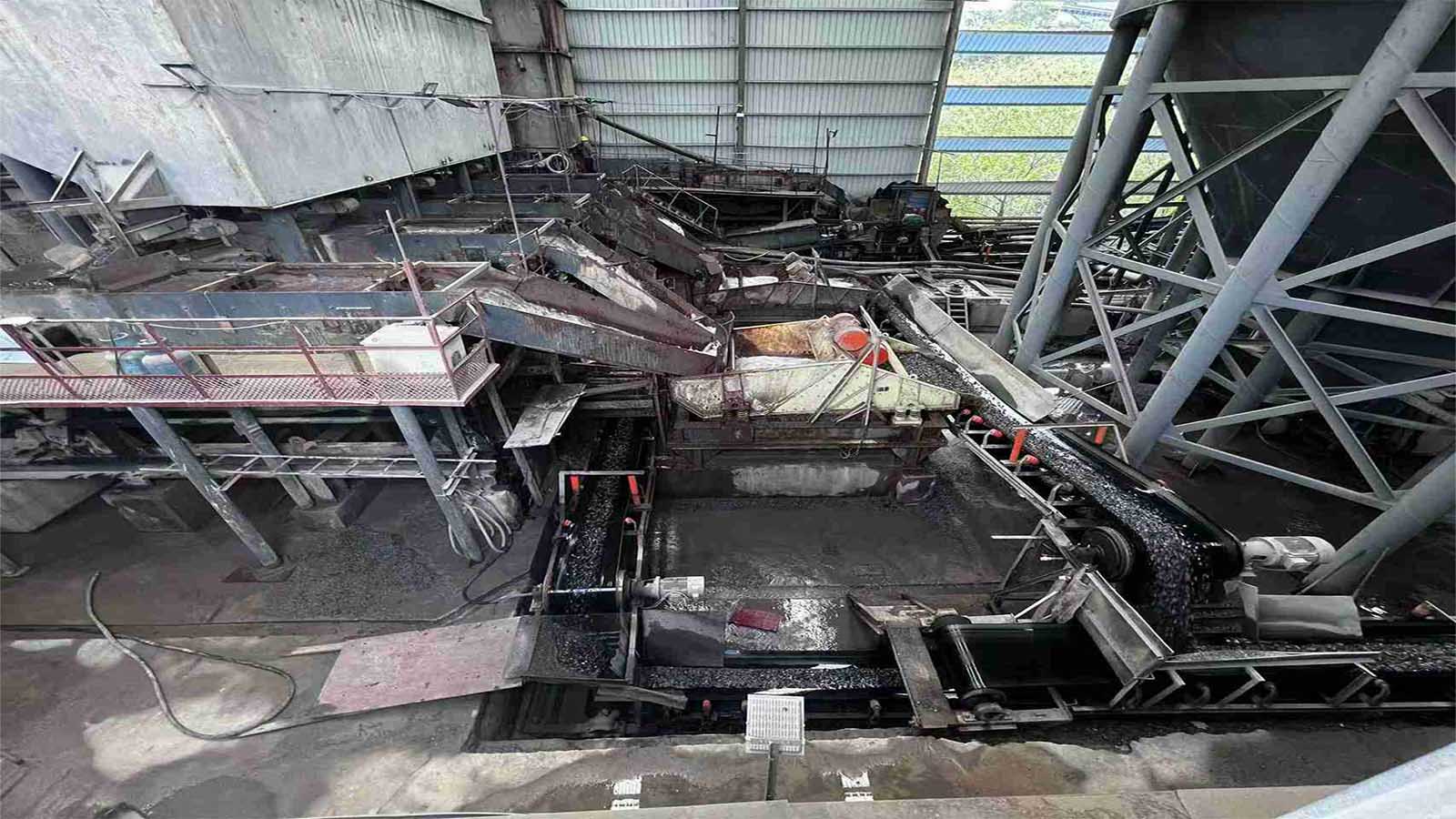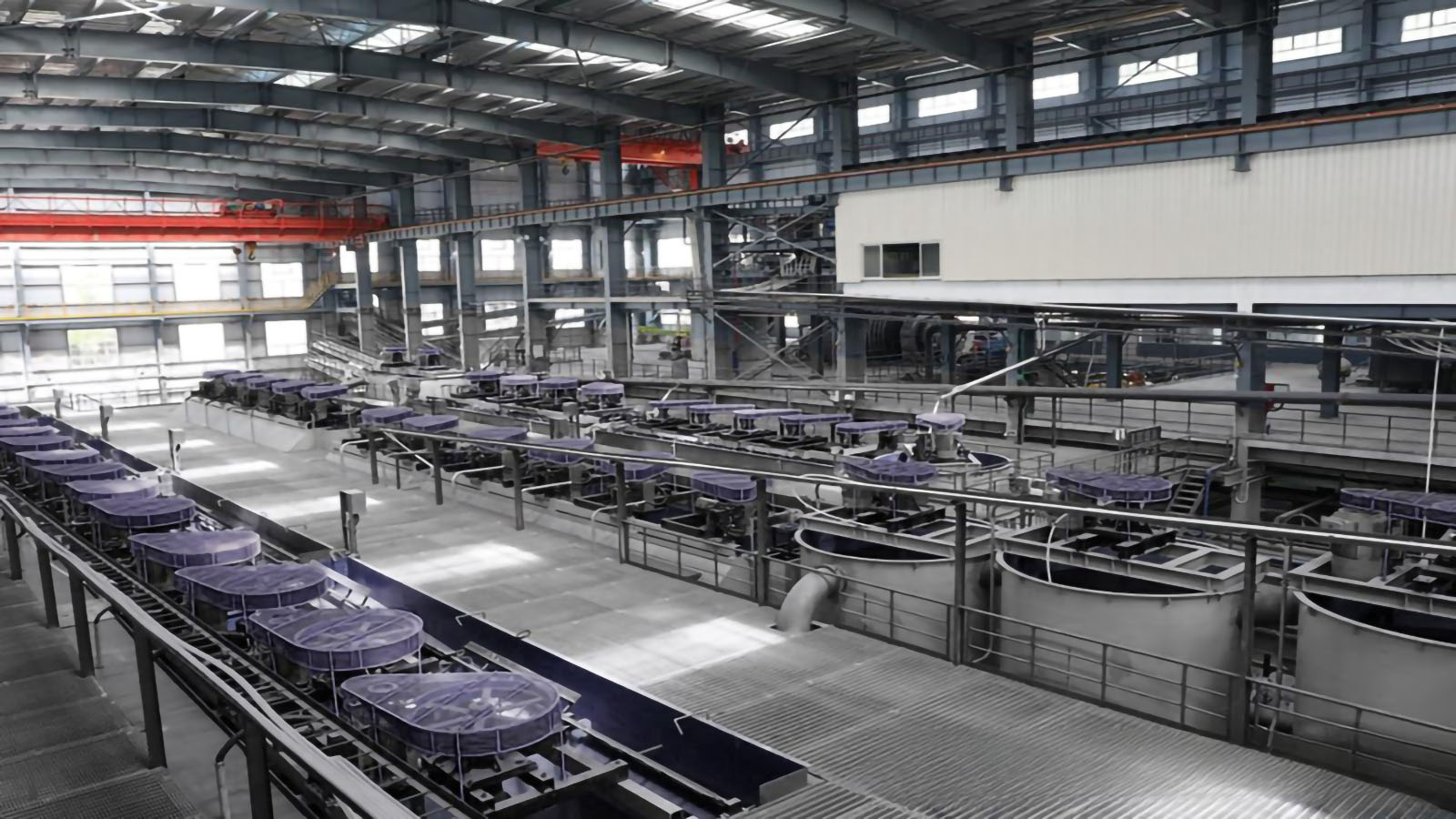
With global high-grade iron ore resources gradually diminishing, the development of low-grade deposits and reprocessing of iron tailings have become important research directions in the mining industry. Effective recovery of residual iron resources from tailings not only improves resource utilization efficiency but also reduces environmental pressure from tailings storage. This article provides a detailed introduction to the main processing methods and technical characteristics of iron tailings reprocessing.
Magnetic Separation Methods for Iron Tailings
1. Basic Principles of Magnetic Separation
Iron in tailings is primarily found in minerals such as magnetite, hematite, and limonite, while gangue minerals are mainly non-magnetic materials like quartz and calcite. Utilizing the magnetic susceptibility differences between iron minerals and gangue minerals, magnetic separation offers excellent recovery results.
2. High-Intensity Magnetic Separation Applications
Since iron tailings typically have fine particle sizes and contain fewer strongly magnetic minerals, high-intensity magnetic separation is commonly used to capture weakly magnetic minerals during reprocessing. Typical process flows employ 2-3 stages of magnetic separation, with high-gradient magnetic separation being particularly suitable for pre-concentration of magnetic minerals. This method can be combined with gravity separation techniques (such as shaking tables or centrifuges) to obtain iron concentrate or titanium-iron concentrate.
3. Pre-treatment Optimization for Magnetic Separation
Direct magnetic separation often yields suboptimal recovery indicators for iron tailings. Practice has proven that fine grinding treatment before magnetic separation can significantly improve the liberation of iron-bearing minerals, thereby enhancing magnetic separation effectiveness. The fine grinding-magnetic separation combined process has become a common method for iron tailings reprocessing, featuring simple process flow and no additional pollution.
Gravity Separation Methods for Iron Tailings
1. Spiral Concentrator Pre-selection Process
During gravity separation of iron tailings, spiral concentrators are typically used for pre-treatment, utilizing mineral density differences for preliminary separation. The concentrate from the spiral treatment enters a regrinding system to improve the liberation degree of target minerals, creating favorable conditions for subsequent separation. Spiral concentrators offer advantages such as simple structure, high processing capacity, and low operation and maintenance costs.
2. Shaking Table Concentration Process
Shaking tables are generally not used directly for iron tailings separation but are often employed for the re-selection of magnetic separation concentrates. During the concentrate upgrading process, adjusting shaking table parameters (such as frequency, amplitude, stroke, etc.) can produce high-grade iron concentrates, effectively improving final product quality.
3. Centrifugal Concentration Technology
Centrifugal concentrators are often used in conjunction with high-intensity magnetic separators and are particularly suitable for separating finer-grained iron tailings. Practice shows they perform well in terms of tailings recovery rate and are suitable for upgrading 35-45 grade intermediate iron concentrates. Notably, appropriate classification operations play a positive role in gravity separation, with the addition of a classification stage before gravity separation significantly improving iron tailings separation indicators.
Flotation Methods for Iron Tailings
1. Flotation Technology Applicability Analysis
When magnetic separation is used for iron tailings reprocessing, recovery rates are relatively low due to the presence of numerous fine and ultra-fine iron particles that magnetic separation cannot effectively recover. In this case, flotation processes become an important complementary method. Flotation utilizes differences in mineral surface properties and, through the synergistic action of reagents and mechanical equipment, can effectively separate fine or ultra-fine iron minerals.
2. Anionic Flotation Methods
Anionic direct flotation is suitable for simple oxide iron minerals, but for iron tailings with complex compositions and high clay content, this method often yields unsatisfactory flotation indicators.
Anionic reverse flotation mainly employs activators (such as calcium ions) combined with fatty acid collectors to float siliceous gangue minerals. However, this method may cause iron-bearing minerals in the tailings to enter the froth together, resulting in decreased recovery rates.
3. Cationic Flotation Methods
In cationic reverse flotation processing of iron tailings, iron silicates and quartz enter the tailings together, resulting in higher concentrate grades. This method is suitable for iron ores with complex compositions but has higher requirements for feed grade. Therefore, iron tailings typically need an additional concentration stage before flotation to achieve optimal flotation results.
4. Flotation Reagent Selection
Common collectors used in iron tailings flotation include anionic collectors (such as RA series, CY series, and other fatty acid reagents) and cationic collectors (such as dodecylamine and other primary amine reagents, and GE series cationic collectors). Selecting appropriate flotation reagent combinations based on ore characteristics is significant for improving recovery rates.
Combined Process Methods for Iron Tailings
1. Limitations of Single Processes
When single magnetic separation processes are applied to fine-ground iron tailings, the separation force for ultra-fine iron minerals is weak, easily causing the loss of fine iron particles and affecting concentrate grade and recovery rate. In single flotation processes, direct flotation has poor adaptability to certain iron tailings, while reverse flotation has high requirements for feed grade and higher reagent costs. These limitations have prompted the development of combined processes.
2. Gravity-Magnetic-Flotation Combined Process
This three-stage combined process fully leverages the advantages of each separation method. Gravity separation as a pre-concentration means not only improves the grade of ore entering magnetic separation but also provides effective desliming, thereby increasing magnetic separation recovery. Flotation serves as a supplementary method, capturing intergrown particles not recovered during the magnetic separation stage and comprehensively improving overall recovery.
3. Magnetic-Flotation Combined Process
For specific types of iron tailings, the magnetic-flotation combined process demonstrates excellent results. By first concentrating iron minerals through magnetic separation, this process not only improves the grade of ore entering flotation but also achieves desliming and impurity removal, creating favorable operating conditions for subsequent flotation.
Selection and Application of Iron Tailings Reprocessing Technologies
In actual mineral processing plants, due to variations in ore characteristics, impurity composition, and distribution states of iron tailings, the required reprocessing methods also differ. Whether for new ore separation or tailings reprocessing, systematic mineral processing tests are needed for analysis to design suitable processing solutions.
Practice has shown that selecting appropriate reprocessing process combinations and optimizing key operational parameters for different types of iron tailings can significantly improve recovery rates and concentrate grades, achieving efficient utilization of iron resources while obtaining ideal economic benefits.
With the continuous development and innovation of mineral processing technologies, iron tailings reprocessing processes will continue to be optimized, providing stronger technical support for the sustainable utilization of iron resources.


